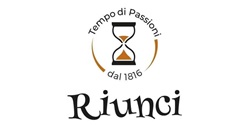NOVARA – Taste Alto Piemonte, the largest event dedicated to the Italian wines of Alto Piemonte organized by the Consorzio Tutela Nebbioli Alto Piemonte, will return on April 15, 16, and 17, 2023, at the Novara Castle. Over 50 wineries will showcase the latest vintages of the 10 denominations of Alto Piemonte: Boca DOC, Bramaterra DOC, Colline Novaresi DOC, Coste della Sesia DOC, Fara DOC, Gattinara DOCG, Ghemme DOCG, Lessona DOC, Sizzano DOC, Valli Ossolane DOC.
Nebbiolo is a precious grape variety, always considered “difficult” to cultivate: it is very demanding in terms of soil and microclimate and requires a lot of care. In return, it gives very high-quality grapes, balanced in terms of color, body, acidity, aromas, and alcoholic strength, suitable for vinification in purity or with minimal additions, to produce “noble” wines of great body and longevity. Today’s cultivations are the result of a great evolution over time, which has led to a drastic reduction and selection of suitable surfaces; for this reason, Nebbiolo is considered autochthonous par excellence, a “terroir grape variety,” because it is strongly linked to the production areas.
In Italy, in addition to the prevalence in Piedmont, it is found in Valle d’Aosta, Valtellina, Franciacorta, and Sardinia. It has very dense and small berries, of dark bluish or purplish color; during ripening, they are abundantly covered with a layer of bloom, giving the impression of being “foggy.”
Perhaps the name of the grape variety comes from here, or from the fact that the late ripening of the grapes leads to harvest between autumn mists. Another possible origin of the name is from the Latin “nobilis.” The fact remains that this “wonderfully vinous grape… makes excellent wine to keep, and it is very powerful” (De Crescenzi, 1304): it presents itself substantially different depending on the belonging terroir, but it is always fine and elegant, rich and complex, unique and unmistakable. It prefers long aging to achieve those characteristics of superiority and great class that have made it famous in the world: noble, indeed!
Until a few decades ago, Alto Piemonte was a dense and vast vineyard, gradually reduced by the industrialization that took place after World War II, which affected the entire Valsesia region. In this context, the small remaining producers have preserved a heritage of identity: the wines of these places are characterized by great quality and finesse and are free from standardized taste. Today, more and more enthusiasts and connoisseurs are looking for denominations that are less “inflated”. Geologically speaking, Alto Piemonte is a highly diversified area, as evidenced by the different colors of the soil and rock. In the far west, we find the denomination Coste della Sesia, where the soil is characterized by marine sediments lying on alluvial or porphyritic soils. Moving eastward, we find porphyry and stones of volcanic origin. The Bramaterra area is the most varied: while most of the vineyards extend on a block of porphyry, on the western and southern margins we find marine deposits similar to those of Lessona.
In Gattinara, the vineyard areas rise above blocks of very compact and hard ochre-brown porphyry, which are crumbly only on the surface. Beyond the Sesia River, within the Colline Novaresi denomination, we find the Boca porphyries, which are brightly pink-colored and so friable that they become dust and are very poor in humus. Further south, we have loosely compacted, gravelly soils that are subject to rainwater infiltration, and are very rich in iron and magnesium. Along this eastern coast of the river, from north to south, are the communal denominations of Ghemme, Fara, and Sizzano, which are very homogeneous from a geological perspective.
Heading north, in the Ossola hills, is the Valli Ossolane denomination. The wine-growing territory consists of terraces with a steep slope in the Toce River valley. It is an area of moraines with a variety of soils, a high concentration of granite, and a complex mineral richness. The moraines, sands, and porphyries of the Alto Piemonte are very acidic soils that give the wine complex and highly mineral structures. The cold winds that come down from Monte Rosa and the Alps cause strong temperature variations between day and night and favor the development of unique aromatic profiles ranging from medicinal herbs to spices.










